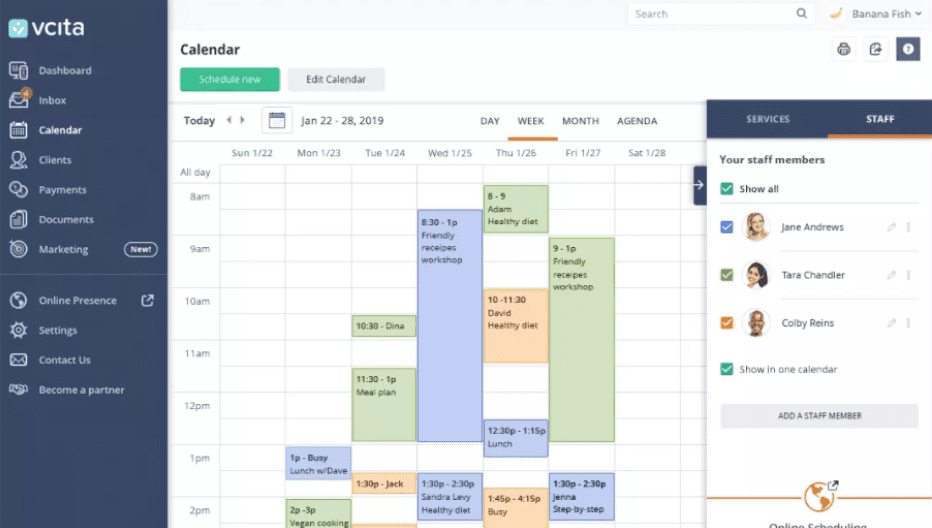Four Steps to Re-Launching Your Small Business After the Pandemic
Practically overnight, life as we knew it changed from the COVID-19 outbreak.
While we can’t do anything to change things beyond our control, it’s important to find the way to keep our businesses afloat.
Here’s how you can revive your business operations after COVID-19 lock-downs and following changing shopping behaviors:
1. Set Up Your Online Presence
If there’s a single good thing to say about this year it has pushed lots of people and companies to finally embrace digitalization. The self-isolation and lock-downs have brought about the whopping 50% increase in Internet use in some areas of the world (Source: Navigating your marketing & business in the face of a global pandemic)
Ecommerce has become a well explored staple of the modern retail industry.
Brick and mortar stores have been on their last legs for a decade and with the changes currently being enacted in multiple markets to move fully to a digital storefront, companies who have not been quick to follow suit have been the ones falling to the wayside.
If you hadn’t been paying attention to your ecommerce website previously, now is the time that you should invest time and effort into building, testing and fixing your site.
Coronavirus pandemic has forced many business owners to re-think two crucial aspects of their business’s online presence:
- Is my site usable? In other words, are my customers able to go through the full buying journey using my site alone? This includes finding products, comparing them, making the buying decision and finally paying for the product using your on-site shopping cart.
- Is my brand discoverable online? In these uncertain times when most people choose to stay home, brick and mortar businesses can no longer rely on foot traffic. The only way to keep your sales going is to create online visibility channels driving customers to your site.
This mainly includes:
- Search and social media advertising (this can help you drive new customers immediately)
- Search engine optimization (this is a longer-term investment but will pay off in the long run)
2. Consider Opting for a Distributed Team Option
Pandemic proved one important thing: More brands can be effectively operated by remote (or distributed) teams.
A distributed team refers to a group of coworkers who may work remotely or on-site (or both). They may work in the same city, but from home, or internationally.
Unlike remote teams, the distribution model allows for more flexibility. Distributed teams can be located partly in the office, partly from all over the world.
This is a perfect model for the post-lock-down era because it gives companies the much needed flexibility allowing them to switch to 100% working within days.
Distributed teams are slightly different than those who work remotely, and are quickly becoming the choice of the most up-to-date businesses looking to take things to the next level.
With the distribution model, companies are able to bring the talent in-house from different countries without going through the business immigration process.
You will need to embrace platforms that deal with business management (so your team can stay on board at all times), and communication (so you can always keep in touch, no matter where you all are.
Vcita offers tools to keep your whole team organized, no matter where your employees are currently located. It handles scheduling, invoicing and billing, client management and even marketing.

Vcita also offers post-quarantine “ready to open” features allowing businesses to easier comply with local reopening laws that include new on-site client and employee management rules, health declaration checkbox and symptom questionnaire templates, touchless transactions, and more.
3. Create Transparent Shipping Terms
No one wants to have to wait weeks for their item. Due to the current pandemic, shipping times are a little off.
If you are selling a tangible product, try and offer the best shipping available, and if you cannot, be as transparent as you can in terms of when those products can be delivered (and why there may be a delay).
To help you out, Termsfeed offers a few shipping disclaimer templates explaining your company’s circumstances due to the global lock-downs. WPBeginner offers even more tools and resources making your reopening process more manageable, including all kinds of disclaimers and templates.
4. Learn to be Flexible
Now that you’re trying to balance work and life in the same setting, recognize that routines are great but not flawless.
Give your employees some flexibility in terms of when they are required to be online working. Allow them to build their own working schedule which fits their new normal lifestyle.
Sometimes it’s better to put a work task on hold for 20 minutes while doing something with kids or going for a walk. It will help them clear their minds, make them feel better, and leave them more time, in the long run, to get the work done.
Conclusion
I’ve heard a saying that we are all going through the same storm but we are still in different boats, meaning that some of us are safer and others feel the impact in a much more dramatic way.
This is true and I am sure all the businesses out there are going through different circumstances and struggling with different problems. Yet, keeping your business afloat may still be doable and I hope the tips and steps above will turn helpful.
Image by cromaconceptovisual from Pixabay









